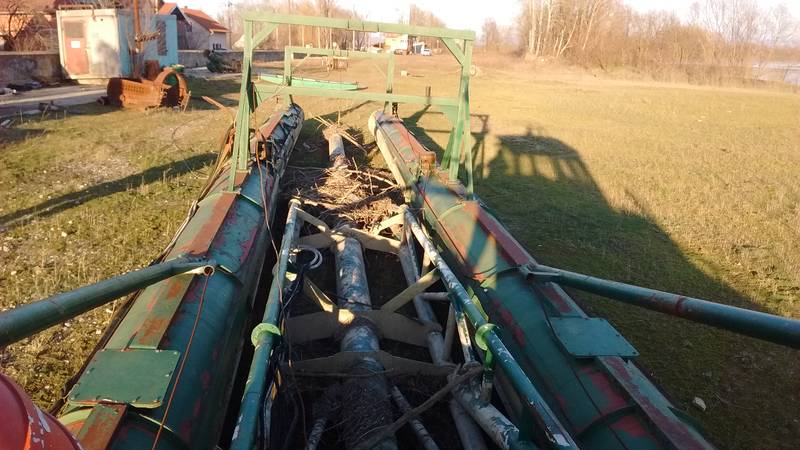Dredging boat
Gold dredging is a form of placer mining and traditional mining that extracts gold from a placer deposit using a dredge. A placer deposit is an accumulation of valuable minerals formed by gravity separation during sedimentary processes. The method allows prospectors to mine for gold in areas where it is typically difficult to reach, such as river beds or other areas with alluvial material.
Here is an elaboration of gold dredging:
Definition:
A dredge used in gold mining is essentially a large, floating boat or platform equipped with machinery that scoops out the sediment and gravel from the bottom of a water body like a river, cleans it to extract gold, and then ejects the waste material back into the water or onto the shore.
Components of a Gold Dredge:
- Pontoon: Provides buoyancy, allowing the dredge to float.
- Suction Hose: Draws up water and gravel using a powerful pump.
- Sluice Box: Separates gold from other materials using riffles and matting to trap gold particles.
- Power Source: Often an onboard diesel or gasoline engine to power the pump.
- Nozzle: Directs the suction, and in some setups, allows divers to manually manipulate the suction process underwater.
- Tailings Discharge: The unused overburden and gravel exit the dredge after the gold has been extracted.
The Dredging Process:
- Location Scouting: Prospectors identify promising areas with past placer gold production.
- Excavation: The suction hose vacuums up sediment and gravel from the riverbed.
- Separation: The sluice box filters and separates gold from the sediment via gravity and water flow.
- Recovery: Miners collect the gold from the riffles in the sluice box, often in the form of gold flakes or nuggets.
- Refinement: The raw gold is often further refined to remove impurities and amalgamate smaller particles.
Environmental Considerations:
Gold dredging, while effective, has raised environmental concerns, including: - Habitat Disruption: The process can disrupt the ecosystem and affect fish and other wildlife. - Water Quality: The churning of riverbeds can release sediments that cloud the water and affect aquatic life. - Tailings: The debris that is dumped back into the water or on its banks can alter landscapes and water flow patterns.
Regulations and Restrictions:
Many countries and regions have strict laws governing dredging activities, requiring permits and adherence to environmental standards. Some places have banned dredging altogether due to its impact on local ecosystems.
Applications Beyond Gold:
While traditionally used in gold mining, dredges like the one you mentioned in Croatia for gravel and sand can be adapted for various activities, including harbor and channel maintenance, land reclamation, and environmental clean-up operations.
Economic Impact:
In regions where gold is abundant, dredging can be a significant economic activity, providing jobs and contributing to the local economy. It has been a part of the historical gold rushes and continues to attract prospectors, often individual or small-scale operations, in numerous countries worldwide.
In summary, gold dredging is a specialized mining technique that requires a balance between maximizing gold recovery efficiency and minimizing environmental impact. The adaptation of dredges for different purposes and the implementation of stricter regulations reflect the evolving nature of this industry.
Start Your Own Gold Mine designs and manufactures gold dredging boats, platforms, and various wash plants in Uganda for distribution locally and globally.
Send your inquiry to GOLDIVANTI LP
Contact GOLDIVANTI LP now. There is a simple rule at GOLDIVANTI LP: if we can help you, we do, whenever and wherever necessary, and it's the way we've been doing business since 2009, and the only way we know
Contact Mr. Jean Louis by ![]() Telegram at username
@rcdrun or by
Telegram at username
@rcdrun or by WhatsApp Business.
